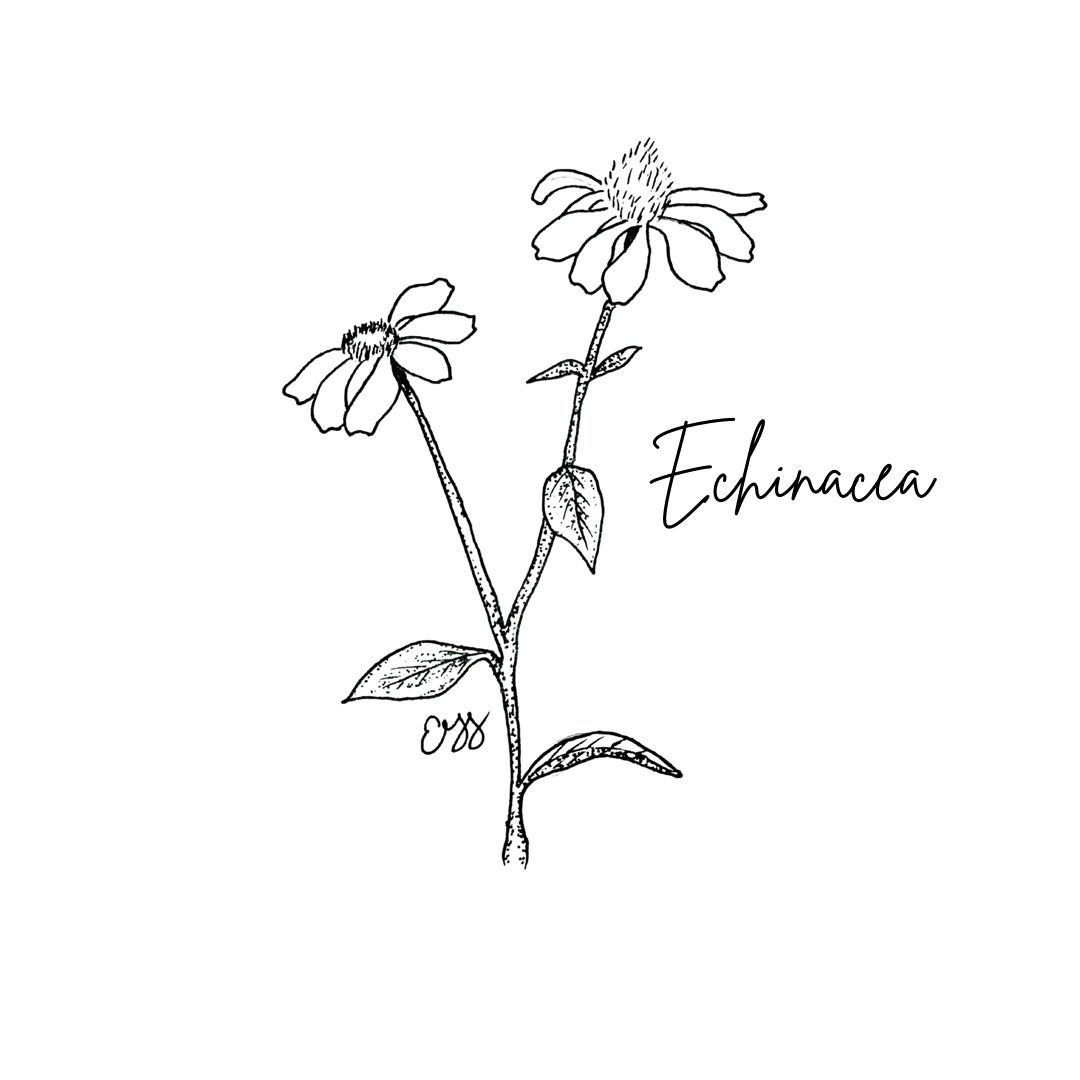Botanical of the Month: September

September Healing Plant of the Month: Purple Coneflower (Echinacea purpurea)
Doterra Essential Oil of the Month: Sandalwood
Rishi Tea of the Month: Dandelion Ginger
In the language of flowers, Echinacea is a leader. It means spiritual warrior, making it the perfect flower to present to someone who needs courage in the midst of a difficult decision or trying time. It can also signify shielding, or protection, which all warriors need, no matter what the battle. A go-to healer for many herbalists, Echinacea can be found as a tincture, tea, supplement or salve, depending on the ailment. It’s well recognized for its immune system-enhancing abilities that help protect (or shield) us from colds and flus. Because of this, the plant has come to be known for its power to bring strength and health, also making it an appropriate flower to include in any get-well bouquet. Folklore says that if you grow Echinacea around your house, bringing in bouquets, it will draw in money and prosperity and be a conduit of strength and protection for those inside.
The name Echinacea comes from the Greek word “echinos,” meaning sea urchin, or hedgehog, referring to the prickly cone in the center of the flower. One of the most captivating features of a coneflower is the intersecting Fibonacci spirals in that prickly center. This is a common feature of the composite disc floret and ray petal flowers from the Asteraceae plant family, which also includes daisies, sunflowers and asters, to name a few. Remarkably, each one of the beautifully arranged spiny orange spikes in the center cone-shaped disc of an echinacea bloom is actually a flower in itself, pollinated individually by bees and butterflies.
Native to central & southeastern North America, Echinacea was growing here long before the arrival of European settlers or pill bottles of antibiotics. Native Americans used it as a curative for wounds, burns and infections, a treatment for snake bites, and to help withstand heat. All parts of the plant can be harvested for medicinal use, but much of the healing power is housed in the root. The Choctaw, for example, used it to treat coughs, stomach upset and sore throats. Great Plains tribes smoked it to be able to better withstand the heat of sweat lodge rituals. Omaha Native Americans would coat their hands with it, it’s numbing effect enabling them to perform ritual feats like retrieving meat from boiling water. In that same vein, medicine men would chew the root in order to coat the interior of their mouths so they would be able to hold hot coals in their mouth during some ritual medicine performances.
In the garden, Echinacea is able to grow in extreme heat (as witnessed during our sweltering summers!), tolerate drought, and is a pollinator magnet. I’ve been watching the bees and butterflies sip nectar from our patch in the pollinator garden all summer. After they move on, the goldfinches swoop in to feast on the seeds, which is one of the reasons we opt to leave the spent stalks up all winter. As for me, doing the research for this article has made me a believer. This coming flu season, I will no longer be indifferently walking past the myriad of Echinacea products at the grocery store. I’m heading right for them, stocking up to fight cold & flu season like a warrior.
